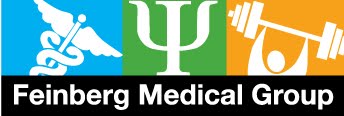As research on the brain explodes, David Butler, M.App.Sc & Lorimer Moseley, Ph.D., are leading a clinical path of how patients can use this knowledge to better understand and manage their pain. Books like Explain Pain and The Graded Motor Imagery Handbook provide both clinicians and patients with a better understanding of how the brain and nervous system affects pain.
Graded Motor Imagery includes three different treatment techniques that focus on using the brain to treat pain. These treatments are 1) left/right discrimination training; 2) motor imagery exercises; and 3) mirror box therapy. This article will focus on mirror box therapy.
Graded Motor Imagery includes three different treatment techniques that focus on using the brain to treat pain. These treatments are 1) left/right discrimination training; 2) motor imagery exercises; and 3) mirror box therapy. This article will focus on mirror box therapy.
We feel pain because our brain interprets the signals coming from our body. All areas in the body are represented in the brain, i.e., there is an area in the brain dedicated to each part of the body. The more you use a part of your body, especially in complex tasks, the more of your brain area devoted to these tasks. The brain changes quickly as we perform different activities.
People who lose a limb, but who still have pain in that limb, suffer from what is called phantom limb pain. Despite the fact that the person may no longer have a right arm, their right arm still hurts. This provides us with evidence that the arm is still represented in the brain.
People who lose a limb, but who still have pain in that limb, suffer from what is called phantom limb pain. Despite the fact that the person may no longer have a right arm, their right arm still hurts. This provides us with evidence that the arm is still represented in the brain.
In chronic pain and disability states, the brain representations of body parts and movements are altered. They lose a bit of clarity, sometimes spread and take over surrounding areas and sometimes get smaller. The longer a problem persists, the greater the brain changes.
Research on Complex Regional Pain Syndrome has shown that the magnitude of the reorganization was positively correlated with the extent of increased pain to painful stimuli and pain intensity. (Plegar B, 2005; Maihofner C, 2006; Maihofner C, 2007).
Research on Complex Regional Pain Syndrome has shown that the magnitude of the reorganization was positively correlated with the extent of increased pain to painful stimuli and pain intensity. (Plegar B, 2005; Maihofner C, 2006; Maihofner C, 2007).
Our body is constantly sending signals to our brain that it is okay and that it performed the activity that the brain instructed it to do. If the limb is amputated, there are no signals telling the brain that the limb is okay. The brain then believes that it is not okay and can send a signal that the limb is painful. In chronic pain states, the limb has constant pain in it and it is telling the brain that it is not okay.
Mirror box therapy evolves from simply looking at the mirror reflection to performing movements and different positions and then exercises. Depending on the state of the painful condition, the right and left side can be moved simultaneously through comfortable movements. This provides both visual and proprioceptive input to the brain. Relaxation skills are often used during this task to further encourage the brain that everything is okay.
By using a mirror, you can trick the brain into believing that an injured part is actually okay, thus providing a powerful brain-changing exercise. Mirror therapy is thought to reconnect motor output and sensory feedback (Ramachandran VS, 1995).
To use the mirror box, let’s say for a left hand problem, you would place the right hand in front of the mirror. The left hand is hidden. You have now created an illusion; the mirror image of the right hand appears to be a left hand. The brain then constructs the reality that the left hand was now somehow okay. It is a way of signaling the brain that the hand is fine and it is now time to represent it properly and activate movement areas of the brain (Seitz RJ, 1998), which have intimate connections with visual processing areas (di Pellegrino, 1992).
Mirror box therapy evolves from simply looking at the mirror reflection to performing movements and different positions and then exercises. Depending on the state of the painful condition, the right and left side can be moved simultaneously through comfortable movements. This provides both visual and proprioceptive input to the brain. Relaxation skills are often used during this task to further encourage the brain that everything is okay.
There is no stated time period that someone should perform mirror box therapy. Within the research studies, mirror box therapy is often performed 1-2x/day for 15-30 minutes each time. The amount that the patient chooses to perform mirror box therapy will depend on the tolerance to this type of activity.
For more information on mirror box therapy and other motor imagery treatments, visit noigroup.com or gradedmotorimagery.com.
You can go also to YouTube at the following Link: http://www.youtube.com/watch?v=hMBA15Hu35M
You can go also to YouTube at the following Link: http://www.youtube.com/watch?v=hMBA15Hu35M
